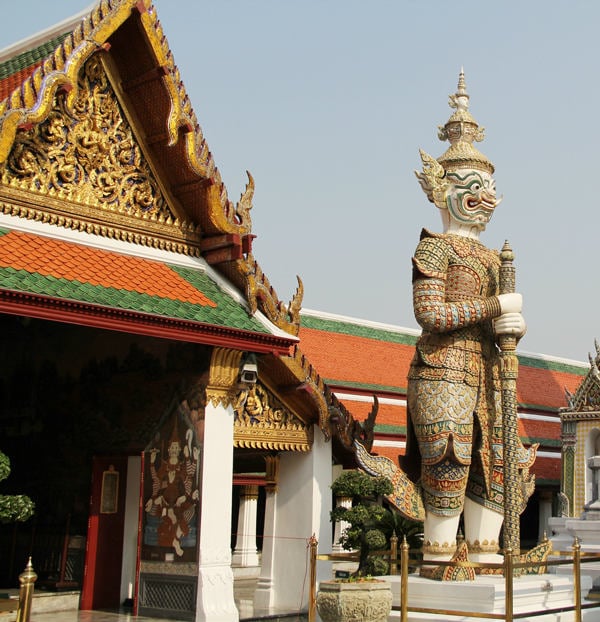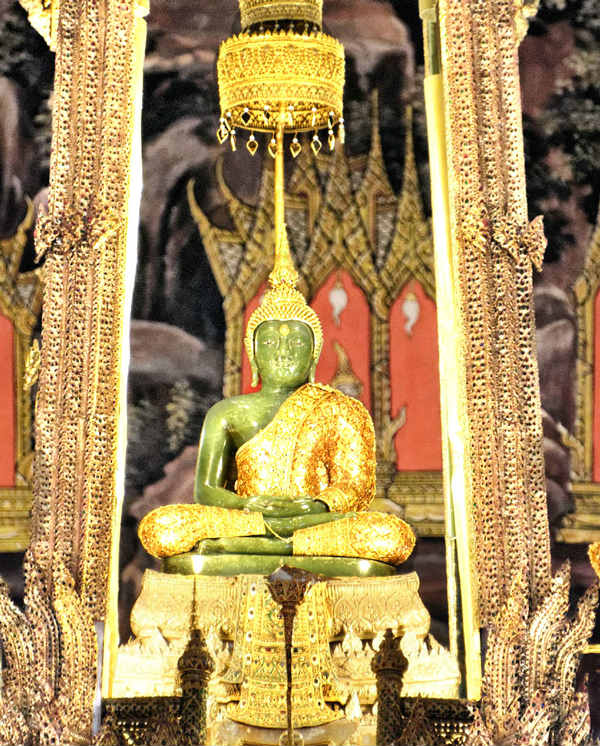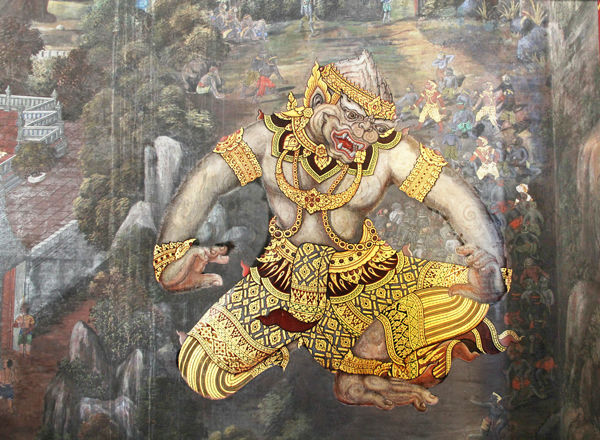‘The Shyam desh of the olden days is Thailand of today. Several Hindu and Buddhist kings have ruled this land. Its culture was based on the Hindu Dharma but with passage of time due to cultural invasions of the Buddhists Buddhism became prevalent here. Here the king was accepted as a form of Prabhu Shrirama and His capital was endowed the status of Ayodhya. Also the Holy text, the Ramayan is considered as the national literature. On behalf of the Maharshi Adhyatma Vishwavidyalay Sadguru (Mrs.) Anjali Gadgil and four seeker-students toured Thailand from April 3 to 7, 2018. Today we shall learn about Bangkok the capital of Thailand.



1. Ratnakosi city built by Raja Rama I of the Chakri dynasty
on either bank of River Chao Phraya is today’s Bangkok city
Ayutthaya is the former capital of Thailand. Raja Rama I of the Chakri dynasty built the city of Bangkok, the current capital of Thailand, in 1782. Bangkok is a big city situated on both banks of River Chao Phraya, its original name being ‘Ratnakosi’.
2. The king constructed a huge
palace in the middle of Ratnakosi city
In 1782 Raja Rama I constructed a huge palace in the middle of Ratnakosi (Bangkok) spread over an area of 60 acres and surrounded by a very high wall. There were three palaces within it, the outer one, the middle one and the inner one, in the south. Some constructions were added later from 1868 to 1910, by Raja Rama V.
3. Special features of the royal palace
3A. Statues of demons guarding the royal palace
There are six large statues of demons guarding the entrance to the palace. They are referred to as ‘Rup yak’ and they protect the royal palace.
3B. Some places have statues of Sages, celestial musicians (kinnar),
Garud (the eagle- the vehicle of Deity Vishnu) and celestial beauties (apsara)
Some places have statues of Sages. Statues of male and female celestial musicians (kinnar) are present inside the royal palace and outside the main temple. Other places have statues of Garud and celestial beauties.
3C. The royal palace has three Buddhist temples
The royal palace has three main Buddhist temples out of which the Buddha seated in a yogmudra is famous as the ‘Emerald Buddha’. In local language this temple is called ‘Wat Fra Kaiv’. After the three seasons of summer, monsoon and winter the clothes of the emerald idol are changed and this ritual has assumed the form of a festival.
– Mr. Vinayak Shanbag, Sanatan Ashram, Ramnathi, Goa (15.5.2018)
The Thai Ramayan with changes in the basic Bharatiya Ramayan – Ramakiyan
The Ramayan is considered as the national wealth of Thailand. The Ramayan reached Thailand through Hindu traders from Bharat who travelled to Thailand thousands of years ago. In those days in every village people would hold puppet shows based on events from the Ramayan. In the 18th century with many changes in the basic Ramayan was written the ‘Thai Ramayan’ in Thailand. This Ramayan known as Ramakiyan differs from the Bharatiya Valmiki Ramayan and has more descriptions of deity Hanuman. It describes Hanumant stealing the life (pran) within the heart of Ravan and handing it over to Rama thus emerging victorious. This is the explanation for winning the battle with assistance from Hanuman. Here Ravan is referred to as Tosokant (the one with ten necks).
Source : Dainik Sanatan Prabhat

 Thailand’s ancient city – Ayutthaya (in local language Ayodhya)
Thailand’s ancient city – Ayutthaya (in local language Ayodhya)